Milwaukee ROS 150E-2 Review
Table of contents
Disclaimer
This sander was provided for review by Milwaukee Australia. I didn’t pay for it and I’m not being paid to review it - heck, this review will probably cross me off the Christmas card list.
Context
Before I dive into the review its probably important to provide context of why I’m looking at sanders. Currently we’ve been using a 125mm/5” entry model Makita ROS (BO5041KX I think, may be the earlier model), as at the time I needed one, it was the best option from Bunnings, Australia’s big box store. It’s gone up about $50 since the time I purchased it.
125mm(5”)” vs 150mm(6”)? ~44% more surface area means things get sanded quicker, and there are few spots where I can’t get a 150mm sander into but I can get a 125mm sander.
It is also probably important to have the context of Milwaukee in Australia. While they’re renown for the 12v and 18v range of cordless tools, over here they have very few corded tools available. For example, no routers, fewer corded drills, fewer circ saws (no worm drive), etc. We have Milwaukee’s M12 Fuel brushless drill and impact driver - they’re great tools with a lot of power, despite their diminutive size (which is a good thing for getting inside cabinets and other tight spaces).
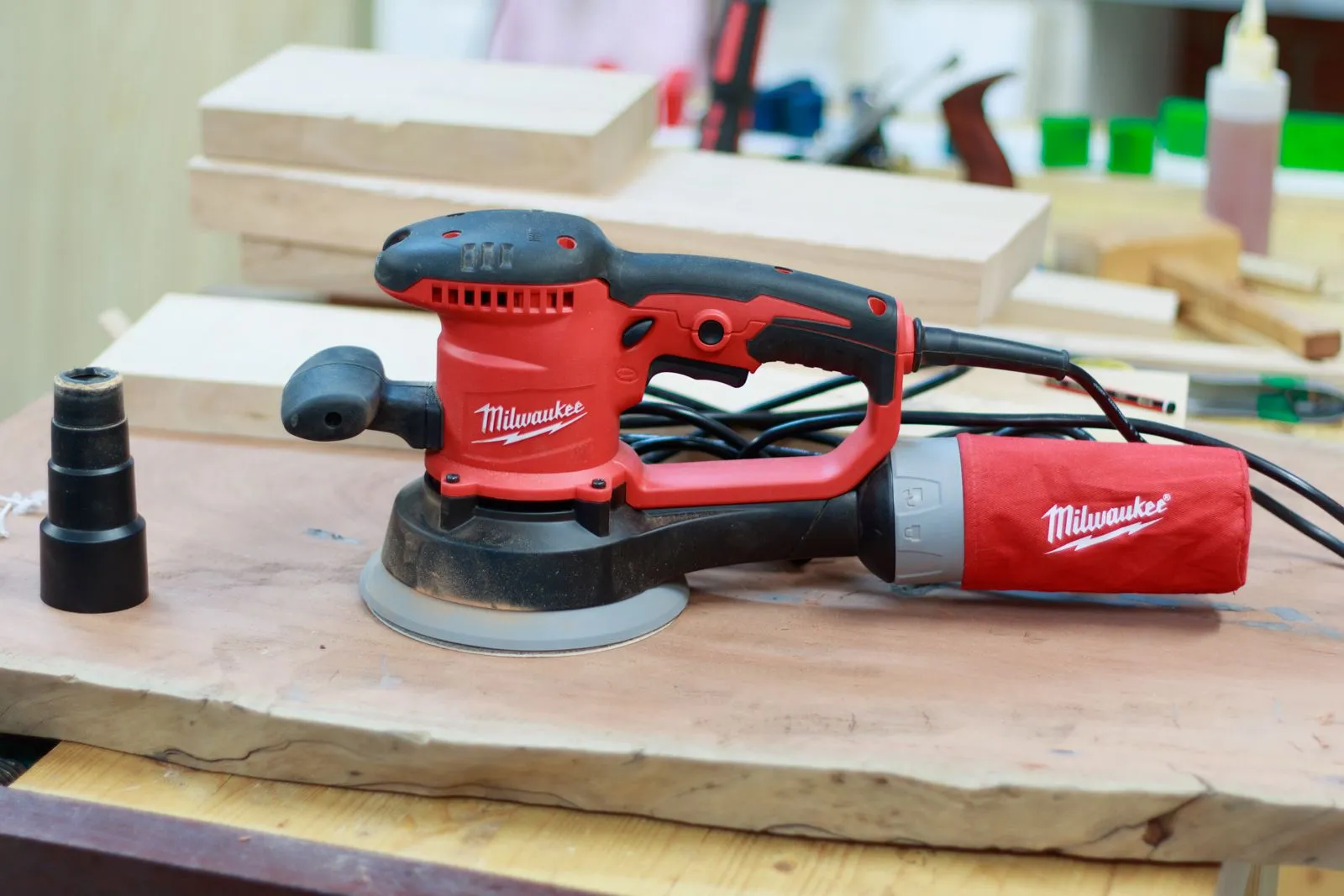
Review
In the box is the sander and “(1) Textile Dust Collection Bag, (1) Assorted Sanding Sheets and (1) Carry Case”. The dust collection bag I’ll talk about later, you get three unbranded sanding discs (80-120-180g) and a soft carrying case. While the case is pretty and a good fit, being a fabric case means you wouldn’t throw it in the back of a truck for jobsite use.
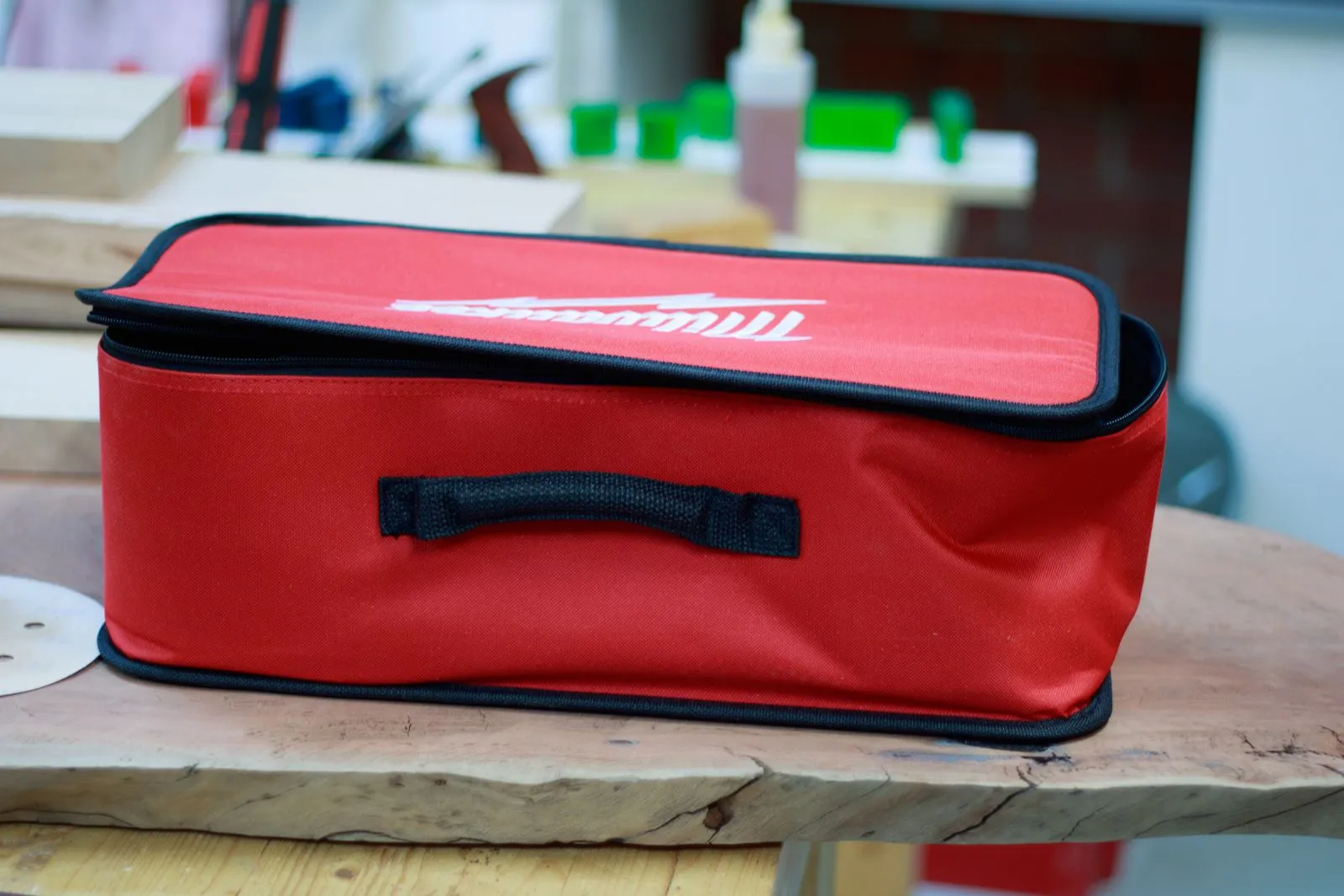
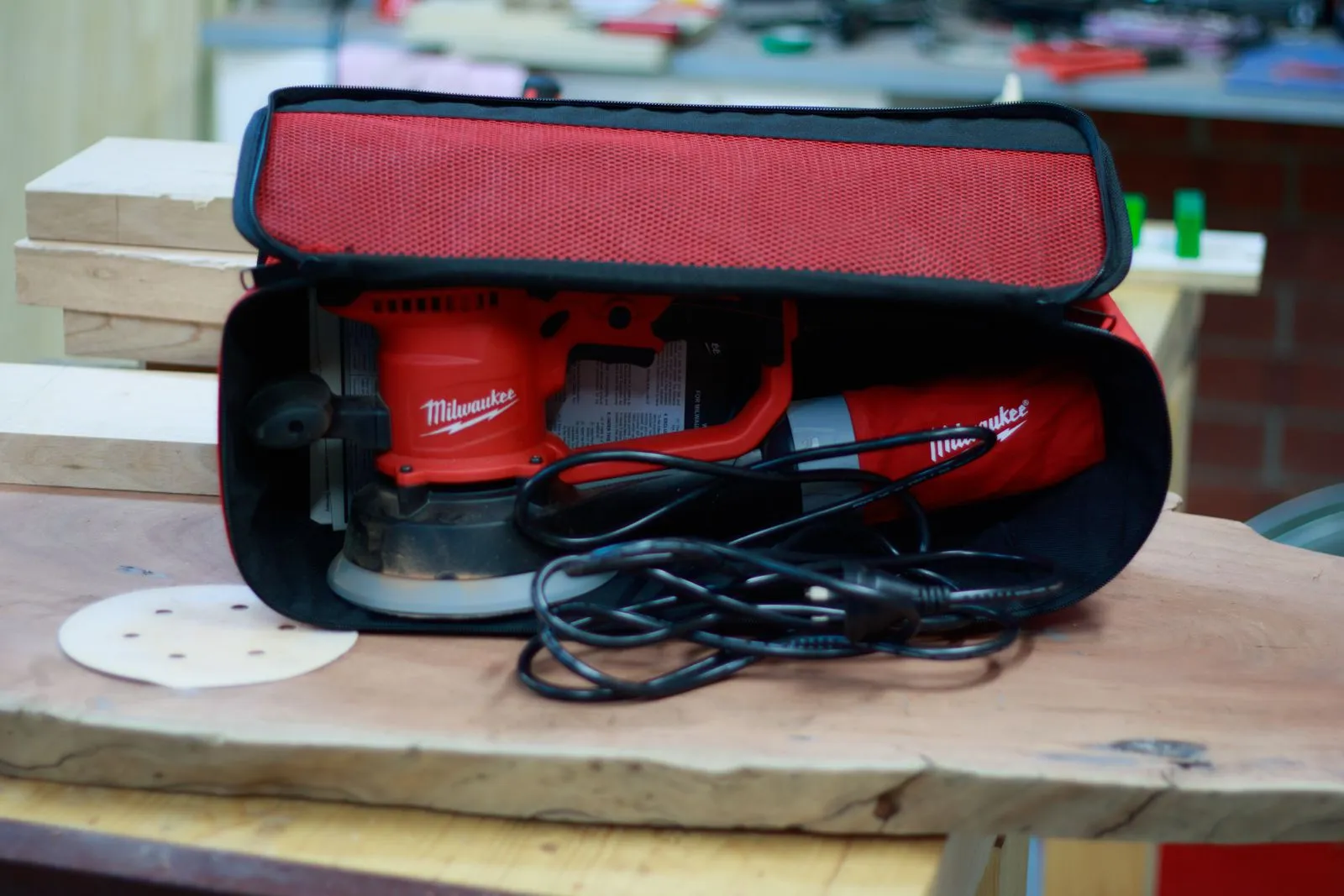
Rather than just listing out the specs, I’ll discuss them in detail. The most interesting feature of this sander is the switchable orbit, either 3.2mm (1/8”) or 6.4mm (1/4”). As far as I could find, only Metabo have a sander that also has this feature. The theory is the larger orbit lets you remove more stock quickly, and the smaller orbit is better for smaller grit abrasives. A good example of this is Festool’s ETS 150/x sanders - there are two models, a 150/5 and 150/3 depending on the work you do.
In practice I found that yes, the 6.4mm orbit does remove more material in the same period of time, but at the cost of more vibration, unless you turn the sander speed down and then you’re losing some of the benefits. It doesn’t remove it as quickly as sanders with force rotation in combination with oscillation (Bosch GEX Turbo, Festool ROtex) however. I did a quick test on some redgum (see the review video) pitting it against the Bosch GEX 125-150 AVE. The ROS E-2 was 30 seconds quicker to smooth the area out, which isn’t bad when both results were under 4 minutes. At 80grit, I didn’t notice any difference between the surface finishes.
The motor comes in at 440w, which is above several others in the same category (Bosch GEX is 400w, Festool ETS 150/5 is 310w). While thats- good, I guess, you won’t bog down the motor unless you put a lot of pressure on it, which you shouldn’t do anyway. The flipside of this - maybe - is that the weight is also higher than the others in the category, coming in at 3kg/6.61lbs, almost double the ETS 150/5 (1.8kg), but more comparable to the 2.4kg Bosch GEX 125AVE (though having used both, the Bosch feels like a featherweight).
Dust collection
Dust collection with the included bag (which has a spring thing inside it to keep it from collapsing) is surprisingly good for passive collection. However, it is just a bag, no filter inside. I can only see myself using the passive collection if I need to collect some sanding dust to make up a filler with epoxy. Cleaning it is a little tricky, but it is a wide enough opening to get a vacuum inside - which is critical if you’re going to use the sanding dust for filler as you don’t want colours to mix. End of the day its pretty good for passive, but not compared to active/with a vacuum.
The real dust collection comes from hooking up a sander to a vacuum- which the ROS150E-2 loses some points. The port size is ‘wrong’ - it fits neither my Fein Dustex (38mm? I forget) hose or my ‘shopvac’ style vac (50mm/2”). I’m guessing it would be a perfect fit for a Milwaukee vac though.
I went to a store selling the ROS 150E-2, and they were a little baffled to see it as “sanders always have the universal size ports!”. They were very helpful there, going through Festool stuff to try and find an adapter. In the end, I went to Bunnings and found a Ryobi adapter. Fitting, I guess, since TTI owns Ryobi/Milwaukee. Even then, I had to taper the end of the adapter with a file to get it to fit properly.
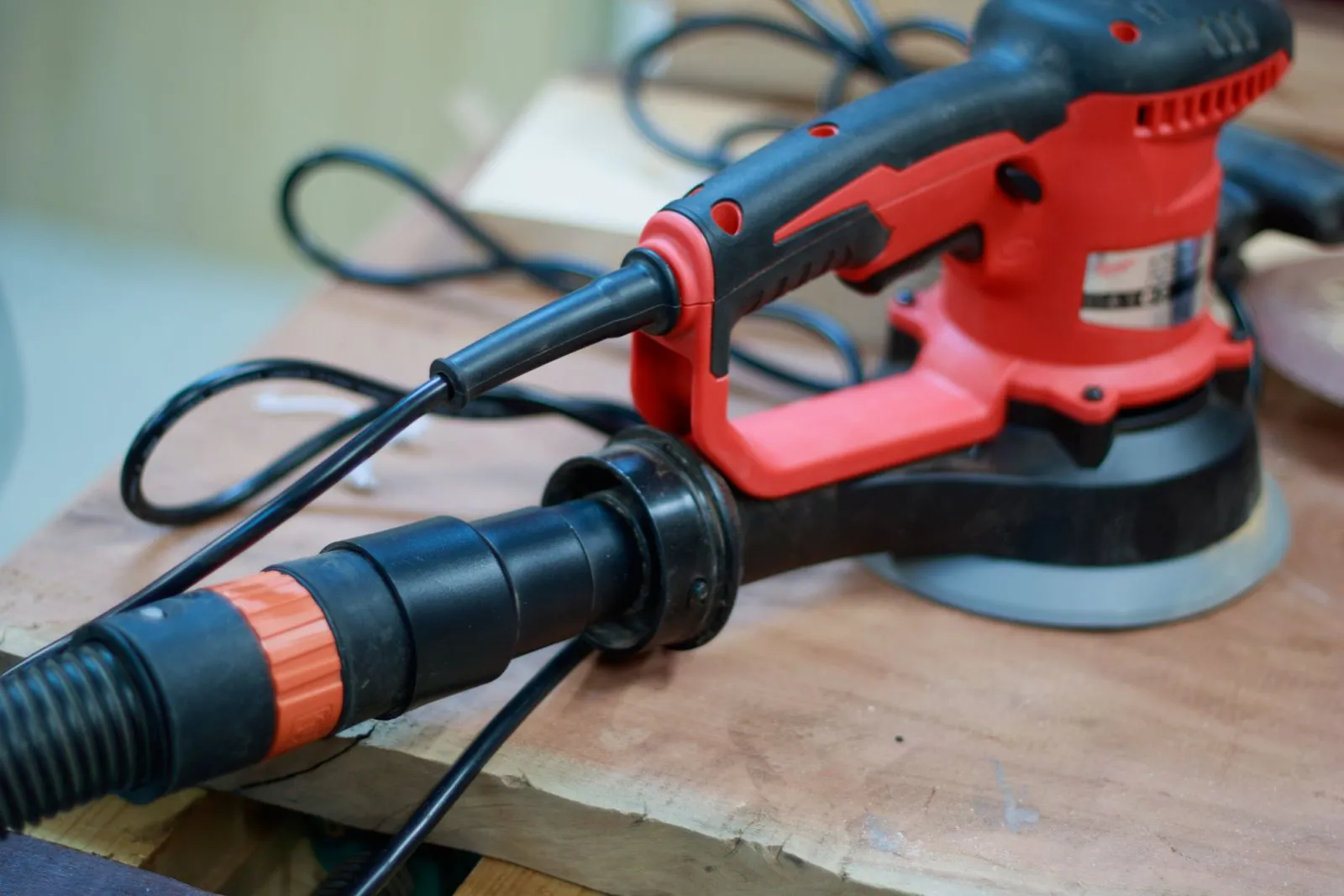
The sander uses 6 hole pads, rather than 6+1, 8+1 or 16+1 (Festool), and from what I can see there are no first party alternative sander pads available to switch to 8+1 for better dust collection.
End of the day the dust collection isn’t crash hot. Too much sanding dust ended up on the pad, which will shorten the life of the velcro. There was always dust left behind in the port, and around the soft ‘hood’ that encloses the disc. It did tend to collect in the tool rather than spewing it forth into the air, so I guess its the lesser of two evils there.
Ergonomics
As mentioned this is a heavy sander - you won’t be using this vertically (not that I do that anyway). The handles are a little square but the overmoulding is forgiving enough that the feel in hand isn’t too bad. The handle/trigger is particularly large which means you could wear gloves and still use it. The speed control dial is very stiff and difficult to turn, but the flip side is you’re not going to accidentally change the speed. It is in an awkward spot on the front of the unit so you have to think a little more to adjust.
Same applies to the trigger lock - its a fairly small, recessed button that requires a fair bit of travel to depress and a small finger - I cannot use my thumb to press it down, and with gloves I think it’d be impossible. It is particularly poorly designed.
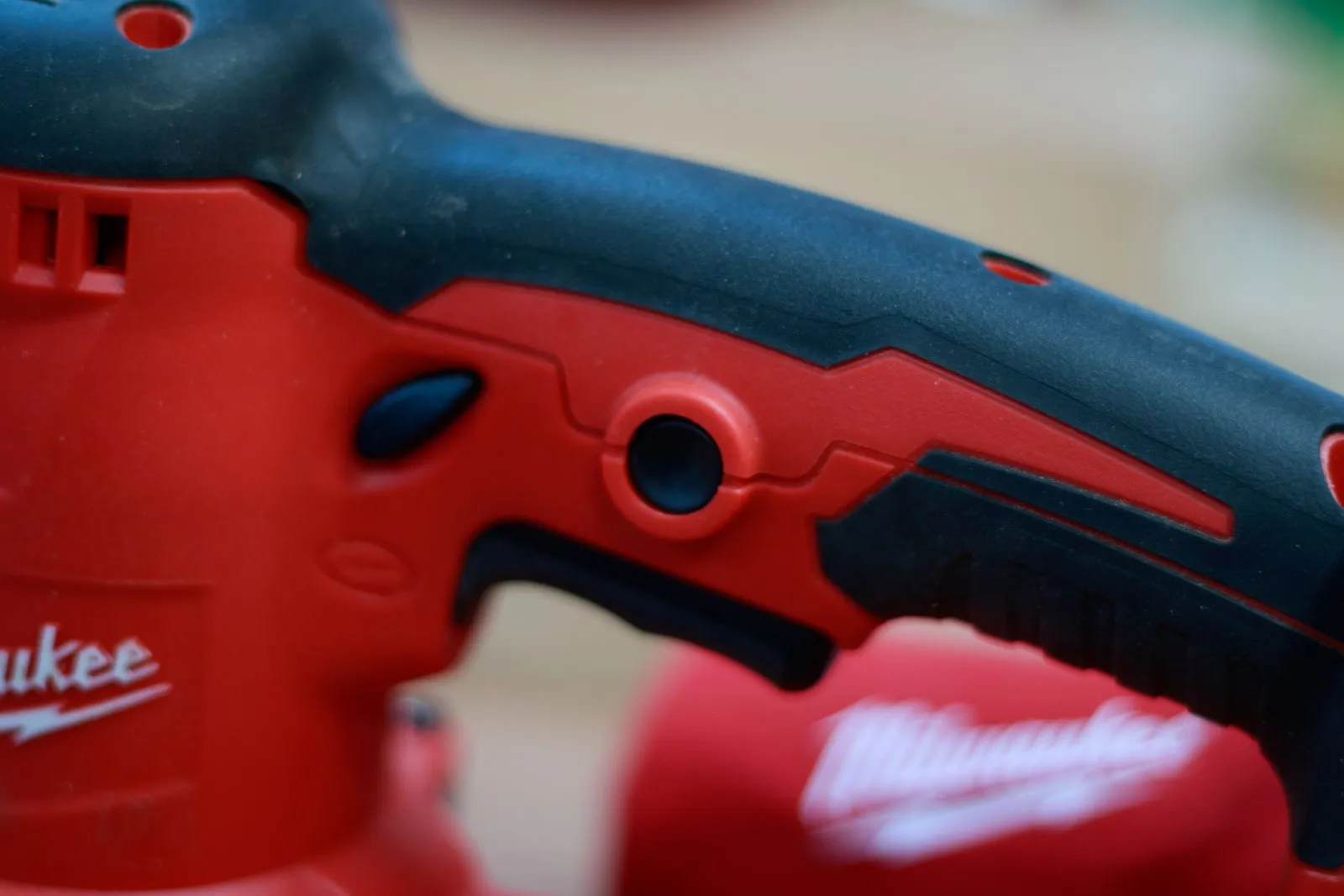
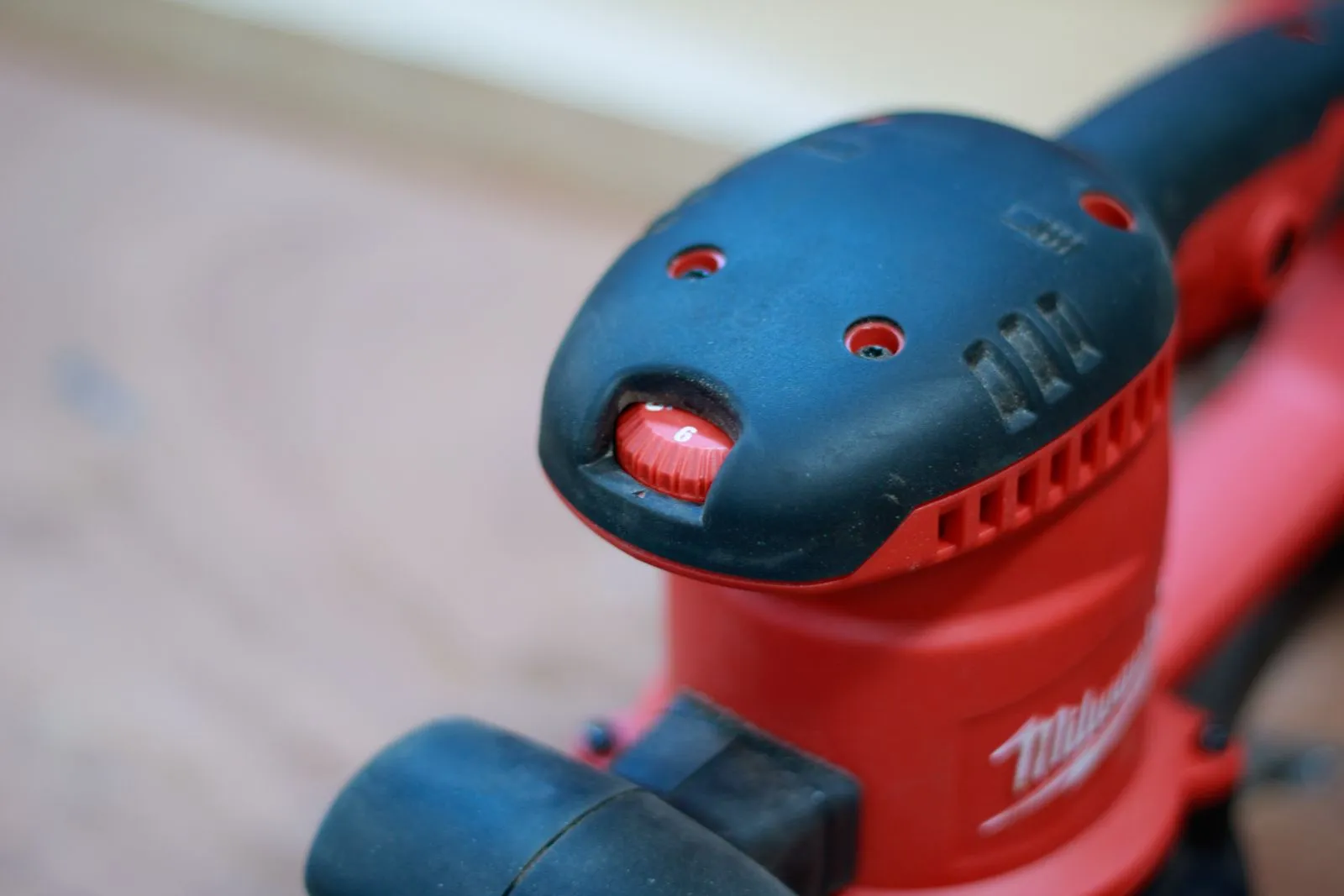
Vibration is what kills the sander. When I first tried it out, my hands felt a little tingly after awhile, but I put it down to feeling a bit off that day. However, trying the next day resulted in the same feeling, and looking at the spec sheet it is listed as 6.1m/s vibration.
6.1m/s, according Canadas OHS is “ok” for two to less than four hours sanding, however, UK/AU say its good for under an hour (~53mins). You might ask yourself if you’d ever need to do an hour of sanding. My most recent project before I started writing this review was a queen bed, the second I’ve made in six months. That sort of surface area, working through all the grits simply takes time. By comparison, Festools ETS 150/5 has a vibration rating of 4m/s, Bosch’ GEX 125-150 AVE has 2.4m/s.
Whether or not you agree with the times/ratings from various OSHA’, it’ll leave your hand tingling unless you wear gloves. After I did the test versus the Bosch sander, while the ROS E-2 “won” in raw speed, I had to rest for 15-20 minutes for the vibration from the Milwaukee to subside so I could move onto the next sander in my test.
Noise wise it is slightly louder than its contemporaries but not such that you’d be wondering who has cracked a circ saw to sand with.
The power cord at 4m is good.
Value for money?
Value for money is relative to the rest of the market. Coming in at around $325 dollarydoos (AUD) street price, the Milwaukee ROS 150E-2 comes in at a funny spot in the market. Its more expensive than the Bosch GEX125AVE, but much cheaper than the Makita BO6030, and ~$200 cheaper than the cheapest Festool ETS. The only sander that is comparatively priced is the Metabo SXE450 - the model mentioned before with the switchable orbits.
Note Dewalt don’t have 150mm sander on the Australian market.
It’s not cheap, but its not expensive. A middle ground pricing, but I’d expect more (well, less vibration) for that.
Conclusion
While the “two in one” capabilities of ROS 150E-2 are great, the subpar dust collection needing you to either go Milwaukee vacuum or carry an adapter and excessive vibration make me question who this is targeted at. I don’t think it fits into a fine woodworking shop, but an onsite installer/carpentry trade might find the switching capabilities suitable as it would reduce the need for two sanders depending on the job.
It would be best used by somebody sanding in short bursts outside so that vibration and dust are lesser issues. The soft case may prove problematic for onsite transport, though.
TL;DR
The Milwaukee ROS 150E-2 is a mixed bag. It’s a capable sander with (almost) unique switchable orbits, meaning it can remove stock quickly or switch down to polishing/finer grits. However, it needs better dust collection and the nail in the coffin is the vibration. It’s simply too high to be healthy for sanding mid to large furniture.